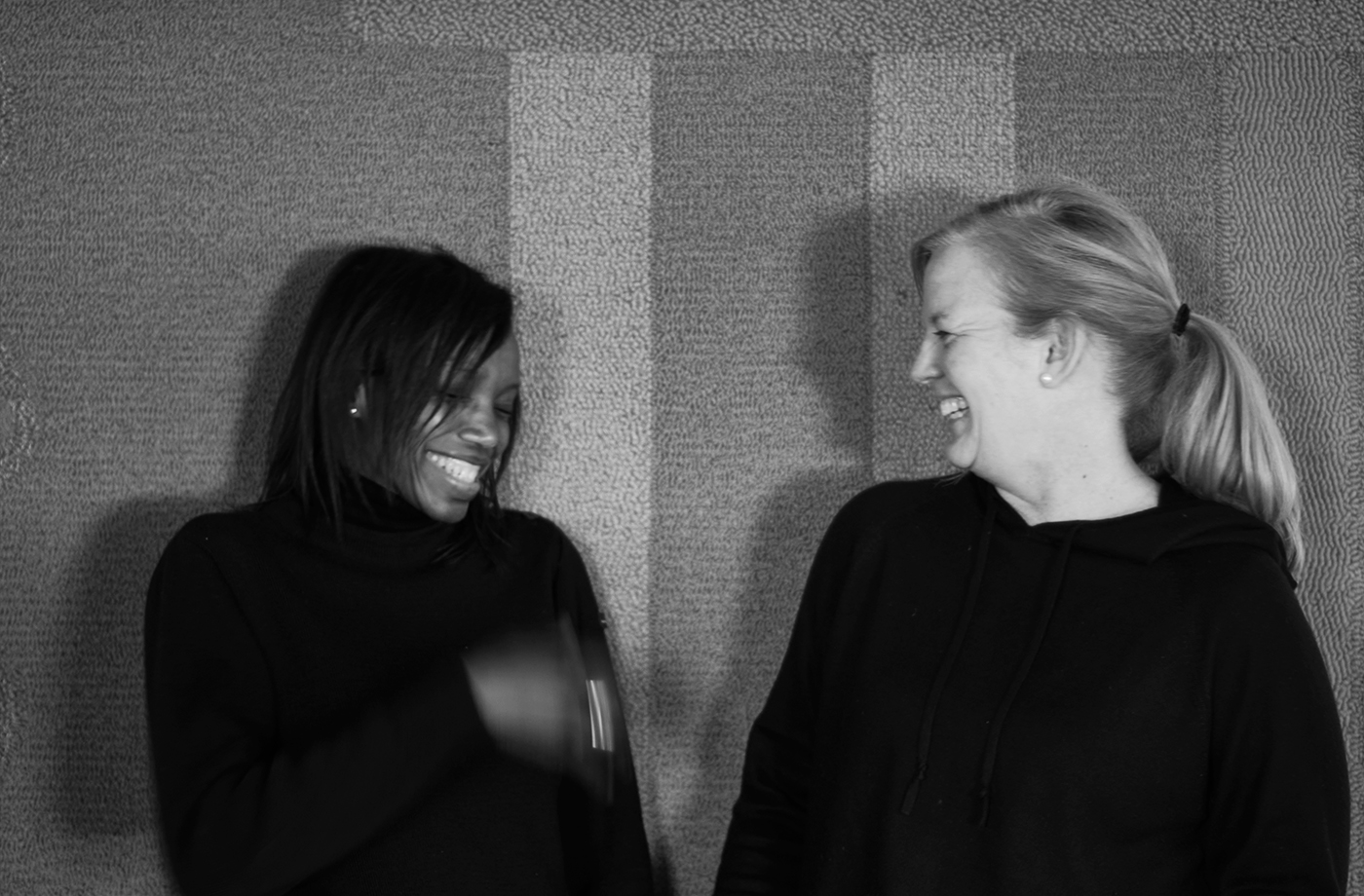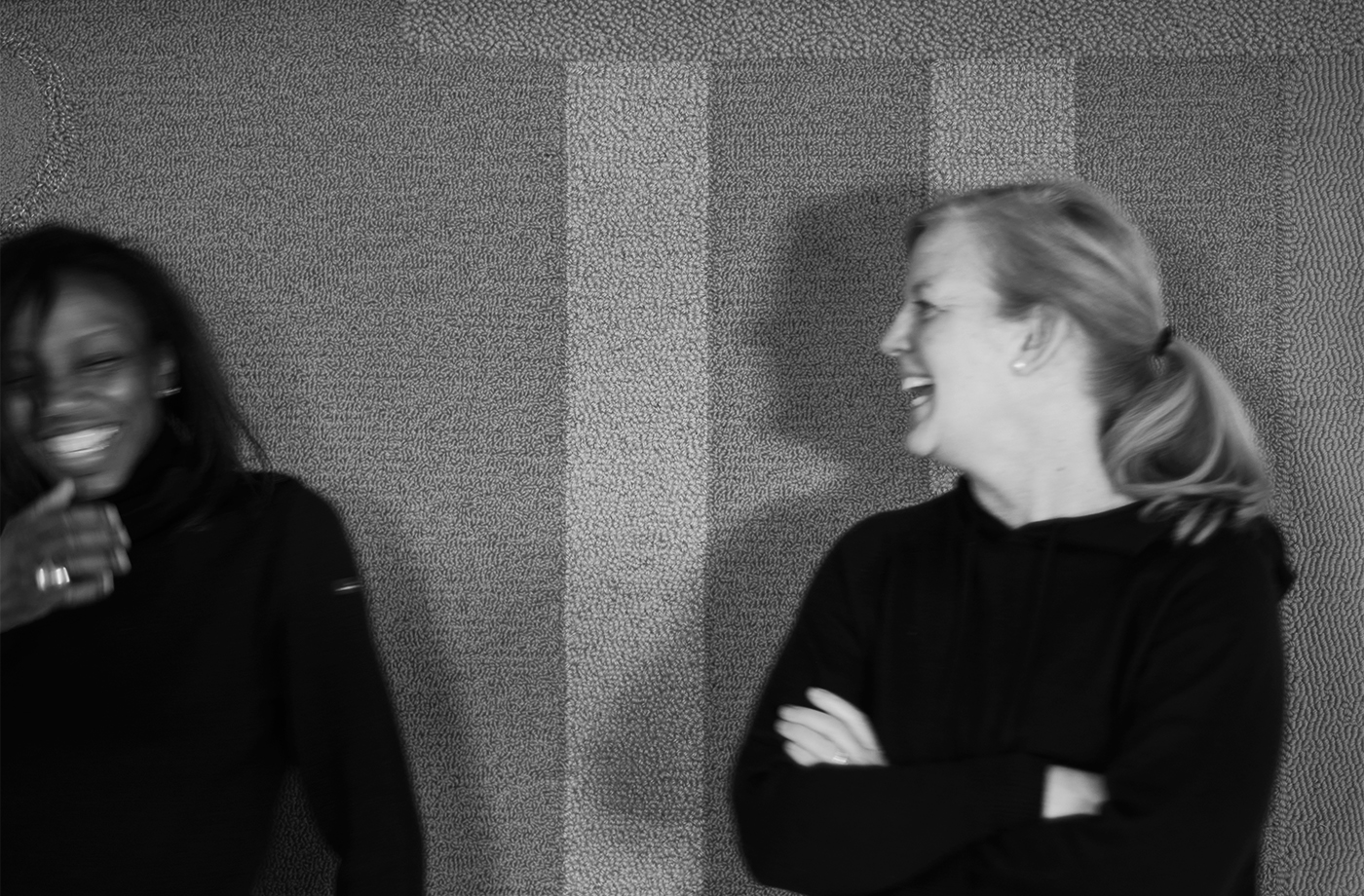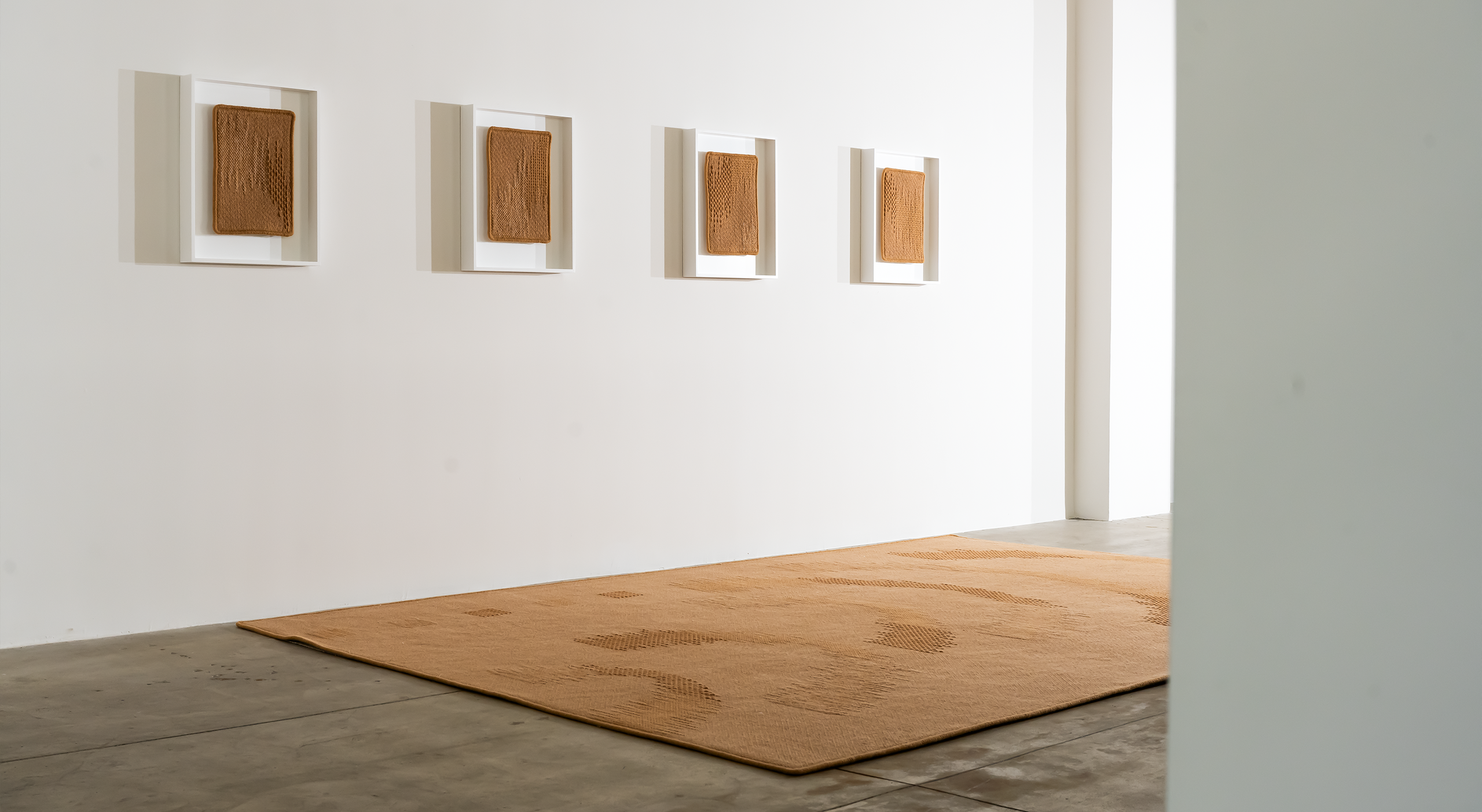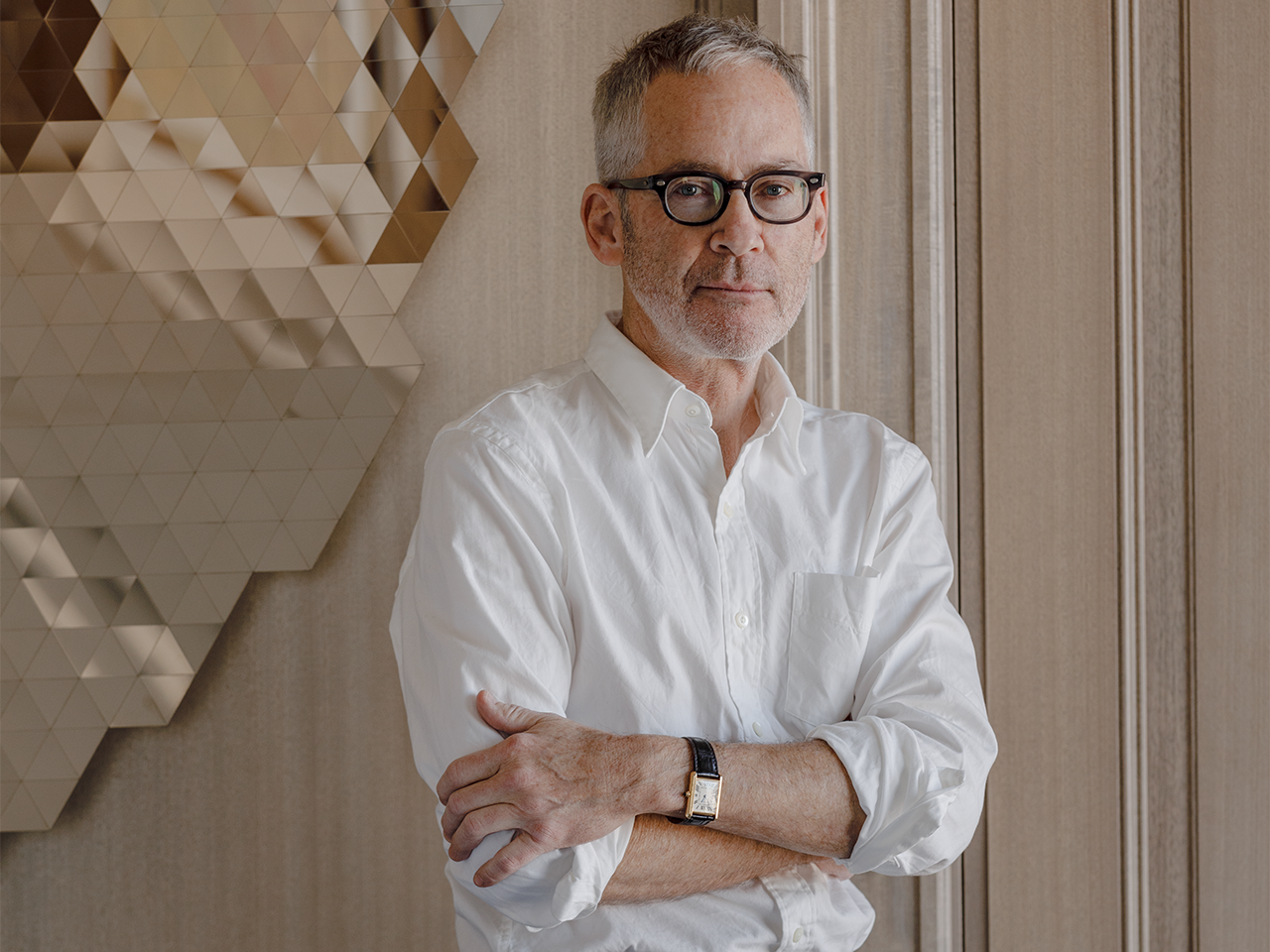Why Art Matters
“When you elevate yourself in your practice, everything around you starts to change.”
— Sylvie Johnson, Artistic Director
Merida CEO Catherine Connolly and Sylvie Johnson discuss their creative connection and how artistic inspiration and daily practice work hand in hand to create textiles that are works of living art. The following excerpts are part one of a two-part interview.
Q: Catherine, your background is in economics. How did you develop an eye for textiles?
My mother and grandmother were painters. I don’t think you realize that your eye is as developed as it is, in my case from growing up looking at art and paintings. With Merida, I think it was through touch and from working with the team and seeing different products being made. Then going to Europe and really having to teach myself about what makes a rug. At the base level, it’s really about the materials, and then you start to understand technique, design, and color dyes. And when you have the good fortune of being around textiles every day, smelling them and feeling them and experiencing them, it’s pretty spectacular.
Q: Sylvie, describe how you met Catherine and what attracted you to Merida?
SJ: We met in my office in Paris and from the first conversation I knew there was something special about this company. I was surprised to learn there was a workshop like this in the US, with skilled weavers making original rugs, which is unusual even in Europe. The first thing Catherine talked about was the people, and I thought there must be something there that needs to bloom.
CC: When I first met Sylvie and saw what she was doing with her own textiles, I was taken by her passion but it was really her artistic skill, which was so nuanced and sophisticated. Now, when I look at what she is doing with our team, I’m most intrigued by her innovation. She knows hand weaving better than anyone, but she thought about how to make the best of the materials, how to combine machines and handwork to make something extraordinary. She wove that into her artistic process in such a beautiful way.
One thing I learned from you, Sylvie, is the fact that when you’re doing hand weaving, the person who starts the fabric wIth textile has to be the one to do the whole thing. That is such a great metaphor. I do think Americans tend to lose sight of that idea that each person brings their spirit, their talent, their strength, their energy. And you think, okay, I can take over from here but you can’t do that, because that person brings something so unique to that process.
As makers manufacturing in the US I knew we had to do something extraordinary, but extraordinary means you have to help people bloom. Not just treating them well and being respectful, that goes without saying, but you have to create an environment where the task is so challenging and aspirational that they have to rise to it. And that to me is what you’ve done so beautifully at Merida.
Q: What is the connection between the master weaver, that imprint of hand and spirit, and the artist making art?
SJ: Good artists are practicing their art literally every day, like a musician who plays every day. Mentally, you need to be in this mindset of mastering what you do because every single thing that you are surrounded by becomes part of the conversation. There is a part where you learn first, then when you digest it and then create something new. When you elevate yourself in your practice, everything around you starts to change.
This is also why every rug we make is unique, like when you are an artist applying color on a canvas, the color will be different if it goes in this direction or another direction. Even if in your mind you want to paint a dot, once you apply the paint it becomes something more than just a dot.
That nuance and expression is why I wake up happy to be doing this work. When I’m creating a rug, a certain yarn might be great, but when we start sampling, I can see it needs an adjustment, change the yarn, change the balance. And even if the sample is done, when we weave the prototype, again, something new happens. You can have two finished rugs, both the same pattern, size and everything, and the yarn will place itself differently. This is the magic of working with natural yarns, how we put them together, how we ply them to create a new yarn. There are subtle differences and nuances that make each rug one-of-a-kind.
CC: I would say Sylvie designs in a way that maximizes the opportunity for mystery to reveal itself. Not just the yarn combinations and what happens when you ply two yarns, but then you have the inspiration, the layers of art, architecture, history that make these Atelier rugs so alive, living works of art. It really is all these things that draw you in and make you more curious over time.
To step on a rug like that every day and think, how else could I be thinking about things at a different level? You’re opening doors every day, just like artwork does for you over time. It’s enriching your life in such a deep but subtle way, something that’s going to change the temperature of the room, alter the atmosphere when people come into your home. That is literally what we’re talking about and what we have been able to achieve with Atelier. I’m certain that our clients will experience, too, once they have the opportunity to feel it with their hands and feet as well as their eyes.
Stay tuned for the second installment of our two-part interview.





